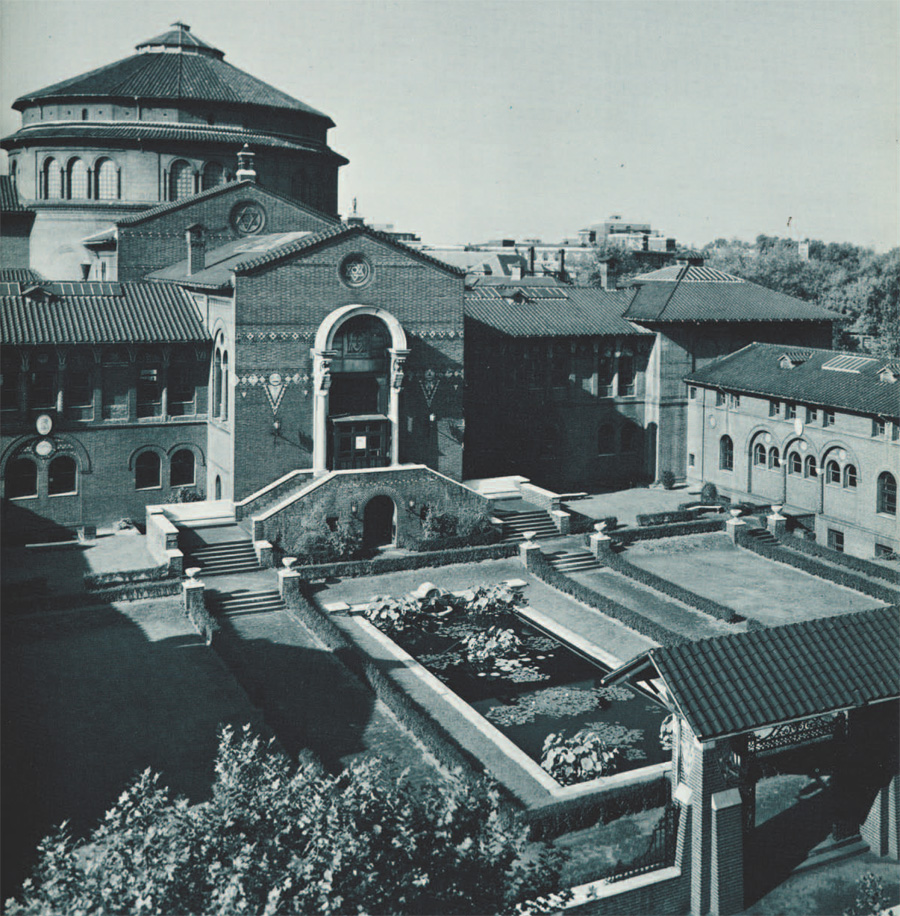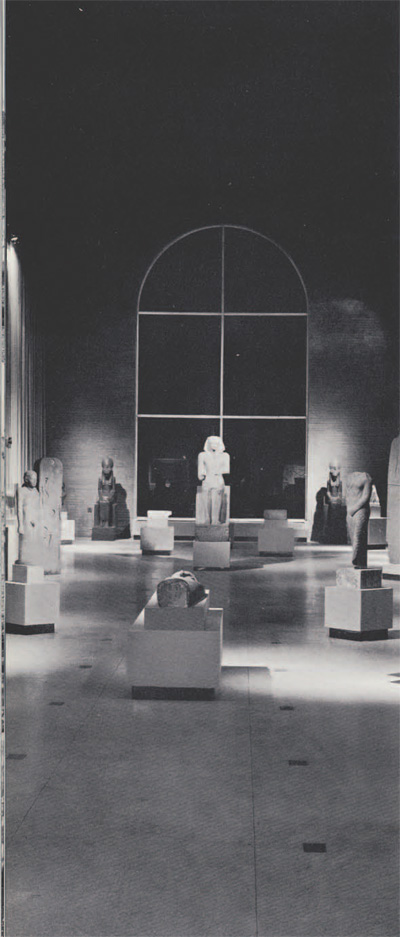
This is the 75th Anniversary of the University Museum. It also happens to be the 75th Anniversary of the Sun Oil Company of Philadelphia, one of the greatest producers of liquid fossil fuels, and this serves to remind us of the enormous force released from the earth to alter the lives of all of us during this one lifetime. No Genii imagined by an Arab story teller, but a giant locked in the mysterious deep layers of the earth, this force now alters the climate in which we live, shoots us around the world in too great comfort in a matter of days, and places fantastic mobile energy in the hands of every man. Now with even more mysterious forces discovered in the atom many of us are appalled at the power we have released. Our eyes are on the future and the unnerving problems of control.
Probably this unlocking of unlimited power has come so fast that none of us comprehends its significance in human history. Certainly those of us who dig for the story of man’s past in the upper layers of the earth are aware of the dramatic changes in human life resulting from improved technology and the forces which these techniques release, but we find no precedent in the long history of man to explain the past seventy-five years, or to prepare us for the next. We cannot, unfortunately, project with good scientific method, a knowledge of hundreds of thousands of years of man’s activity into predictions for the future. Not even a knowledge of five thousand years of civilized living (most of which has been reconstructed by the diggers during the past century) can help very much to foresee the future of our particular civilization–simply because of the technology and the force which this civilization has discovered so recently.
Why then does an institution like the University Museum devote its energies to the study of lost civilizations, forgotten cultures, and surviving primitive people? Why did more than sixty thousand people recently crowd into the Museum to see a few objects from the famous tomb of King Tutankhamun, and why do books on archaeology sell in the millions? For that matter, why does a man like Arnold Toynbee spend his life trying to discover a design in the whole history of man if he does not expect to project that design?
 Scores of dedicated men and women employed by the University Museum in the past seventy-five revolutionary years must have asked themselves these questions since they were living in that period when technical changes were taking place at such an unprecedented rate. Their interest lies, to a large extent, in technological change through millennia, and the effect such change may have upon human society and man’s ideas. Certainly they seek a design and an understanding of the process of human history, but I think that most of them, particularly in this generation, do not think of archaeology and anthropology as like the physical sciences in which phenomena are observed and organized in order to predict. The imponderable nature of man and his history, poetically expressed as the riddle of the sphinx, is always with us, and I suspect that this is the puzzle which impels the digger and the anthropologist as well as all intellectually curious people who seek to know more about themselves. It is also the key to the urgent modern problem of control for the fantastic forces unleashed by human society in these last seconds of geological time since the turn of the century. We do not seek to predict but to understand.
Scores of dedicated men and women employed by the University Museum in the past seventy-five revolutionary years must have asked themselves these questions since they were living in that period when technical changes were taking place at such an unprecedented rate. Their interest lies, to a large extent, in technological change through millennia, and the effect such change may have upon human society and man’s ideas. Certainly they seek a design and an understanding of the process of human history, but I think that most of them, particularly in this generation, do not think of archaeology and anthropology as like the physical sciences in which phenomena are observed and organized in order to predict. The imponderable nature of man and his history, poetically expressed as the riddle of the sphinx, is always with us, and I suspect that this is the puzzle which impels the digger and the anthropologist as well as all intellectually curious people who seek to know more about themselves. It is also the key to the urgent modern problem of control for the fantastic forces unleashed by human society in these last seconds of geological time since the turn of the century. We do not seek to predict but to understand.
Students of history are, of course, like all people today, caught up in the massive communications now encircling the earth and drumming upon the senses of the individual everywhere. They too are subject to the mass hysteria which can be generated by the sheer force of world-wide mass communication of the new order. But I choose to think that the individual who focuses upon the whole history of man can more easily avoid the kind of hysteria which, during the last century, compelled Russian peasants to crowd whole communities into their barns and then burn them down, or Americans in this generation to build fall-out shelters in their back yards in an attempt to escape their responsibility for “The Bomb.” I choose to think that although the riddle of human nature and human history still escapes us, the search for an explanation does, in itself, provide an intellectual and emotional equilibrium which is now more necessary than ever. And I hope that the many very good current books written about past civilizations and ancient peoples can help to provide this equilibrium for all those thoughtful people who look with anxiety upon the massive stereotyped convictions and attitudes which now seem to distract the best judgement of men. Like most anthropologists I assume that human nature is one of the most constant elements with which we deal and that we see its steady reflection through the moving curtain of cultural behavior however strange this may be.
The spirit of institution, like that of individuals, can have a subtle effect upon everyone who works with them. For seventy-five years this Museum has sent men and women all over the world. They have observed and reconstructed the records of human behavior in all continents and in all ages. Their basic objectives have not changed. However different our lives have now become and however much our methods have changed and our detailed knowledge has increased, I feel sure that there is the same compelling enthusiasm for the search, the same consuming interest in rediscovering the affairs of men so different from ourselves, at least in the trappings of their particular time and culture. And those of us who n ow have to carry on the traditions of this unique institution will always remember that we are here because three generations before us made it possible for us to continue the same exciting kind of quest. I feel sure that all of us are grateful to those earlier men and women who conceived the idea of this institution and who made of it something much more than a collection of objects and researchers.
